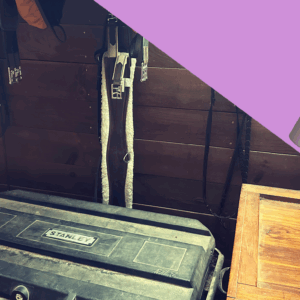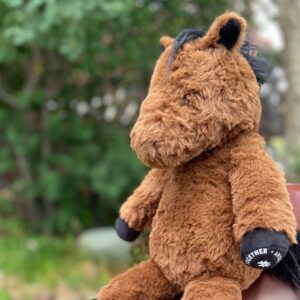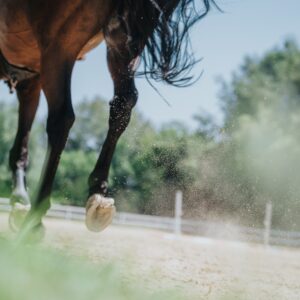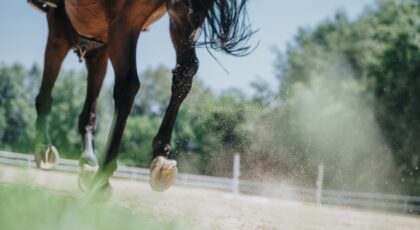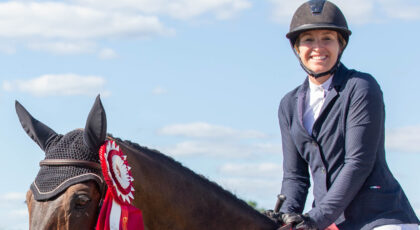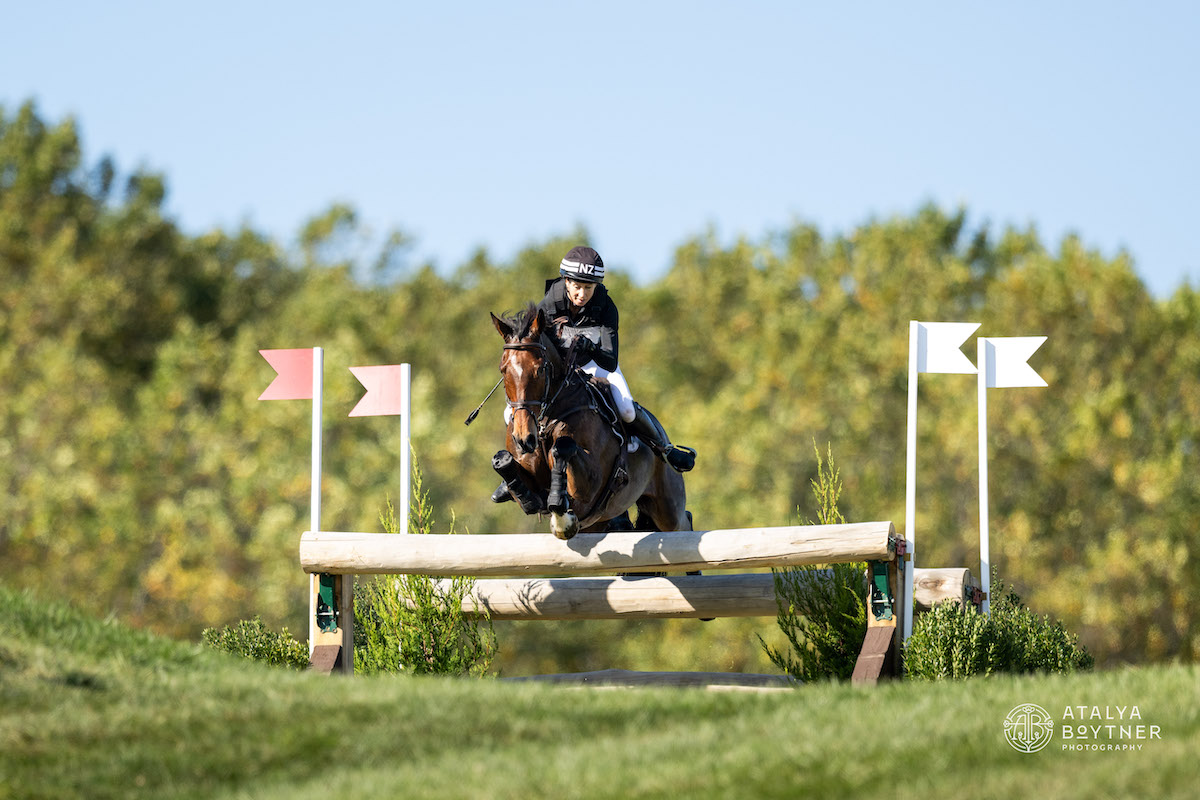Although southern California is a pretty balmy place in which to keep a horse, not everyone is so lucky.
Fortunately, while wintertime means that people are breaking out the down parkas and long johns, horses are built to handle just about anything that winter brings along.
NOTE: For those of you in the southern hemisphere, I realize this article is not particularly timely. You can save it for later.
Horse geometry
One of the many reasons that horses do so well in the cold is because of their geometry. To help visualize this, think of a horse as a big cylinder on sticks.

The cylinder of the horse—his body—is pretty big. There’s a mathematical relationship in geometry between the size of the cylinder and the surface of the cylinder. The bigger the cylinder, the less surface area there is relative to small cylinders.
So, for example, a hummingbird is a very small cylinder. It has a lot of surface area relative to the size of the cylinder. That means there’s a lot of surface that heat can radiate from relative to the size of the bird. As a result, hummingbirds have a very fast metabolism—they’re working really hard to stay warm.
Horses, on the other hand, have a fairly small surface relative to their size. As a result, horses have a really hard time getting cool. When it is cool, they’re actually very comfortable—their big cylinder is generating a lot of heat. That’s one reason why horses get frisky in cooler weather—they feel great!
In fact, horses are most comfortable at temperatures between 18° and 59° Fahrenheit (-7.7° – 15° Celsius) and they can tolerate temperatures as low as -40° F (-40° Celsius). Body clipping might change things a little bit, but the geometry remains the same.
TRIVIA ALERT: Minus 40° is the only place where the Fahrenheit and Celsius scales are the same.
Consider the wind
Cold winds are awful, and they’re awful for horses, too. Horses need to have some place to get out of the cold, winter wind. That doesn’t necessarily mean that they need a barn with mahogany paneling. Simple shelters can be very effective. Even topographical features such as hills, dips, or trees can help break the wind.
That said, if it’s raining and windy, shelter becomes more important. A winter hair coat is not nearly as effective when horses get wet because wet coats can’t trap warm air. Of course, some horses just won’t go in a shelter—they’re very good at circumventing even your very best intentions.

Blankets
For some reason, blanketing horses can be a rather emotional topic. My general feeling is that people usually blanket their horses for the right reasons, even if it’s not necessary. I think it’s great when people do things for their horses, even if they don’t have to.
Still, this does lead to the rationale that overcomes many horses owners (including many in southern California) of pulling out horse blankets because the horse owner would get cold if the owner had to spend the night in a stall. Plus, new blankets always give at least one reason to spend time perusing the seemingly innumerable horse catalogues that jam up one’s mailbox.
Blankets are not necessarily benign, either. Hair coats do a great job of protecting a horse from cold weather because they fluff up and hold warm air. Blankets, on the other hand, do a great job of flattening out the horse’s hair coat, they can cause the horse to sweat, and thereby get in the way of the horse’s ability to insulate itself.
Like I said, though, even if horses don’t need blankets, these are not arguments that I find productive. If it’s extremely cold, a blanket’s great, too (of course, so is a barn). In general, if people want to blanket their horses, I typically say, “Great!” even if I’m shaking my head. Of course, “Great” is exactly what I say to people who don’t want to blanket their horses, too.
BUT THEN THERE’S THIS PROBLEM: I once met a horse owner who was despondent because the horse psychic had told the owner that the horse hated the color blue (the psychic was apparently unaware that horses are mostly color-blind). The owner felt terrible, having kept the horse wrapped in blue for several years. The owner, on the way to the tack shop to get a red ensemble, stopped and confided in me: “Dr. Ramey, I had no idea horses were so materialistic.” Neither did I.
RELATED: “Blanketing and other Colorful Considerations.“

Feed
When it’s cold outside, the horse has to use more calories to stay warm than when it’s hot outside. Depending on how cold it is, horses may require a considerable amount of extra calories (nutritionists have actually calculated such things, but to me, it’s really only important to remember that when the temperature drops, the amount of feed should go up).
“But what feed,” you say?
That’s easy. When it’s cold outside, horses need more hay. They don’t need more grain, more supplements, more oil, or more ration balancer. Hay ferments in the horse’s large intestine and fermentation makes heat. Don’t worry to much about how much more—allowing horses to eat as much hay as they want in the winter months isn’t a bad idea. If they get fat, you can always cut back.
Water
I am hoping that it’s not news to you that horses need water, no matter what the temperature. Some people seem to have this romantic notion that the hardy horse can pound through frozen rivers with its hooves to get to the water below. Or they’ll eat snow. Or something.
No. Horses cannot meet their water needs by eating snow and chances are you don’t have a frozen river at your barn, either. Horses don’t drink as much water when the water is cold, so the incidence of constipation and colic (impaction colic) goes up in the winter months. That’s why it’s a really good idea to provide warm water to your horse in the winter if you can. Keep the watering trough or tank or bucket or water ice-free and keep it warm if you can.
Oh, and make sure the horses can’t get hold of the electrical cords and electrocute themselves if you do decide to warm their water. Like I said earlier, horses are very good at circumventing even your very best intentions.
Shoeing and trimming
If you keep your horse in the pasture in the winter, you should probably pull his shoes. Horse shoes do a great job of holding snow; horse feet can get rather sore if they have to walk around on the ice balls that can form between the branches of a shoe. You’re not going to be able to pick his feet often enough to keep ice balls from forming under your shod horse’s hooves and you’re not going to want to go outside when it’s that cold anyway.
In addition, taking the horse out of shoes for a while is arguably healthy for his feet. Farrier are also happier when they don’t have to try to nail shoes on in sub-freezing temperatures, as well. Trust me on this one.

Riding
Personally, I think that the back of a horse is one of the coldest places that you can be in the winter, but that still doesn’t stop me. Horses love to exercise when it’s cold outside because the don’t get nearly as hot.
One of my most special memories is riding a horse in the Rocky Mountain National Park in a heavy snow storm. (I used to be a trail guide when I was in my teens). Plus, the barn had a bunch of chile rellenos ready when I came back, and it’s been one of my favorite foods ever since.
Bottom line? When it’s cold outside, go riding, wear enough clothes, and have a blast.
RECOMMENDED READING: If your horse is in cold conditions, there are all sorts of resources for you. One of my favorites is sponsored by the government of Ontario, Canada, which is a place that knows about cold. Read their wonderful article about horses and cold weather.
This article originally appeared on DoctorRamey.com and is reprinted here with permission.


 November 24, 2020
November 24, 2020 






